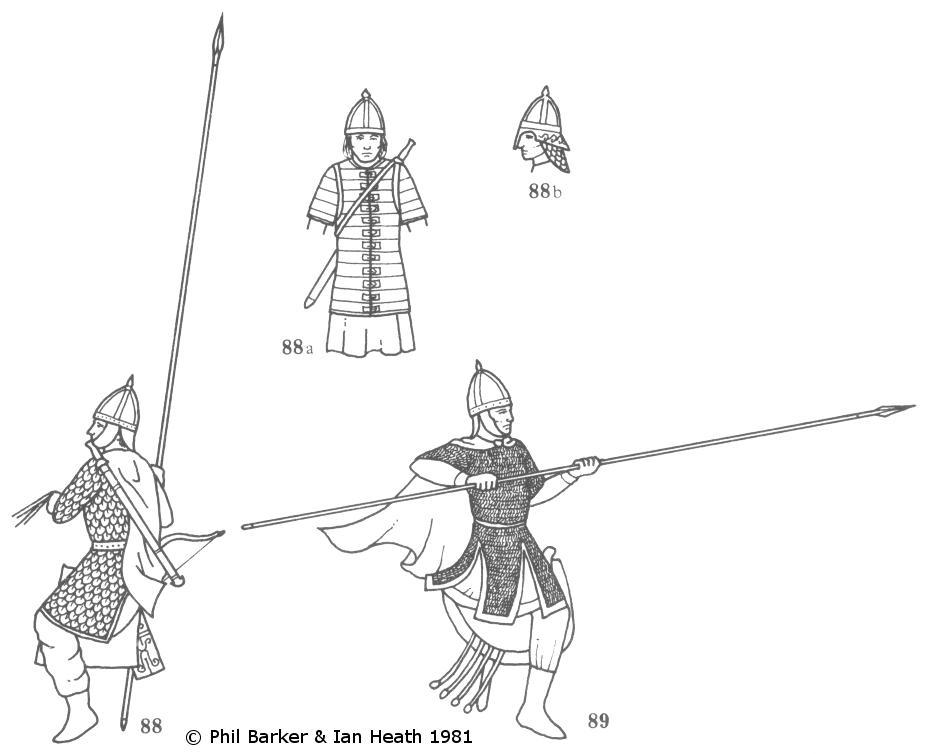
Find the perfect fit with Amazon Prime. Try Before You Buy.
SARMATIAN CAVALRY
An extract from The Armies and Enemies of Imperial Romeby Phil Barker & Ian Heath
88 & 89. SARMATIAN CAVALRY



88 represents a typical Trans-Danubian Sarmatian of the kind that raided Roman territory and were allies of the Dacians.
He wears a spangenhelm type helmet and an elbow-length coat of greenish blue scales of horn from horses' hoofs. Only the richest of Sarmatian nobles could afford metal scale armour, but light, tough horn was an acceptable substitute. Such a noble might substitute a more ornate helmet like that of 88b, or even 87a. A man who could not even afford horn could have red lacquered rawhide scales, or rawhide laminated armour like that of 88a, whose helmet also lacks nose, cheek and neck guards. About half the army's cavalry would ride horses which were also protected all round with horn or rawhide scales. The Sarmatian horse was tough, fast, but on the small side, so in most cases this would have been his limit anyway.
His weapons are a Kontos, a weakish self bow carried in a case with separate quiver at his right, and a sword slung across his back. The weakness of his bow and his lack of a shield did not deter him. His favourite tactic was a wild charge with his Kontos held in both hands. This took a lot of stopping, but if it was stopped, he was considered fairly easy meat by his Roman opponents.
It is likely that the main force of charging cavalry would have been supported by small numbers of immature youths without armour and carrying only bows, but it is really anyone's guess what these would look like.
Western Sarmatians seem to have been fond of bright colours, but not so fond as the Celts and Germans of keeping themselves and their clothes clean, this presumably being due to their nomadic background. They were dark haired and sallow featured.
89 is a different kind of Sarmatian, those that had settled down in the rich corn growing area north of the Black Sea to rule a population of peasants and Greek town dwellers. He wears an iron mail coat with four slits at the bottom, paid for by the peasant taxes and made by Greek craftsmen. He has discarded his bow, hangs his sword at his side, rides an unarmoured horse and has learned to wash. Men like this probably provided the Sarmatian mercenary cavalry of Mithridates of Pontus.